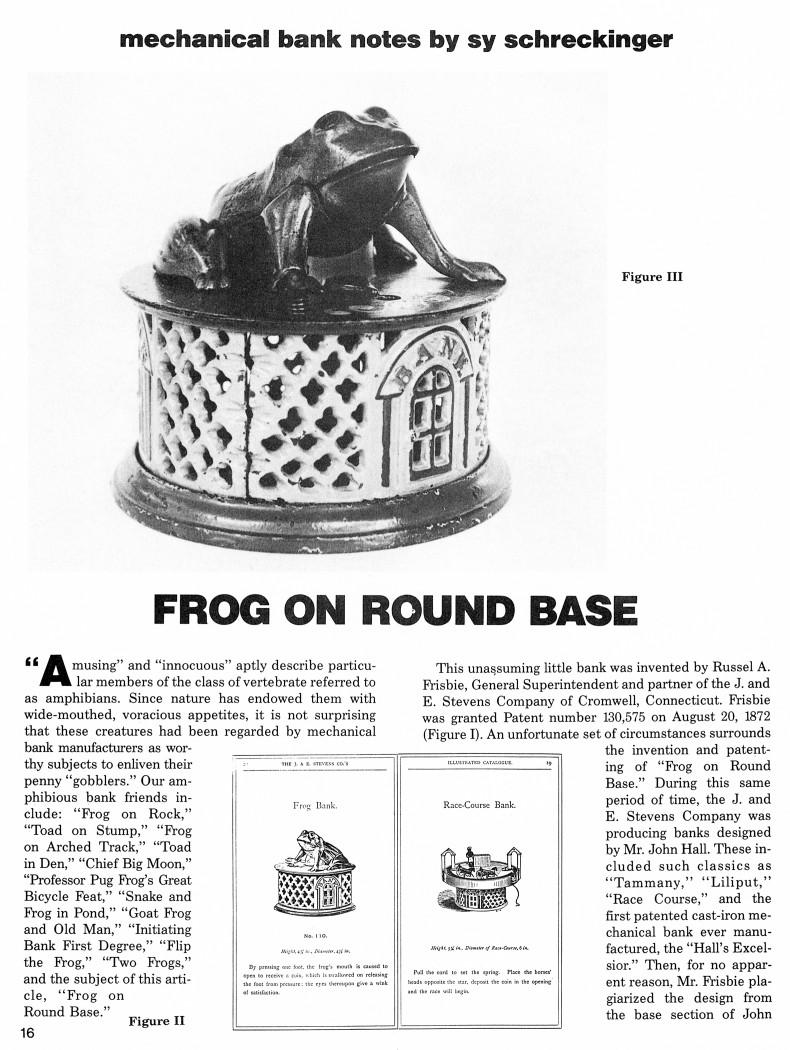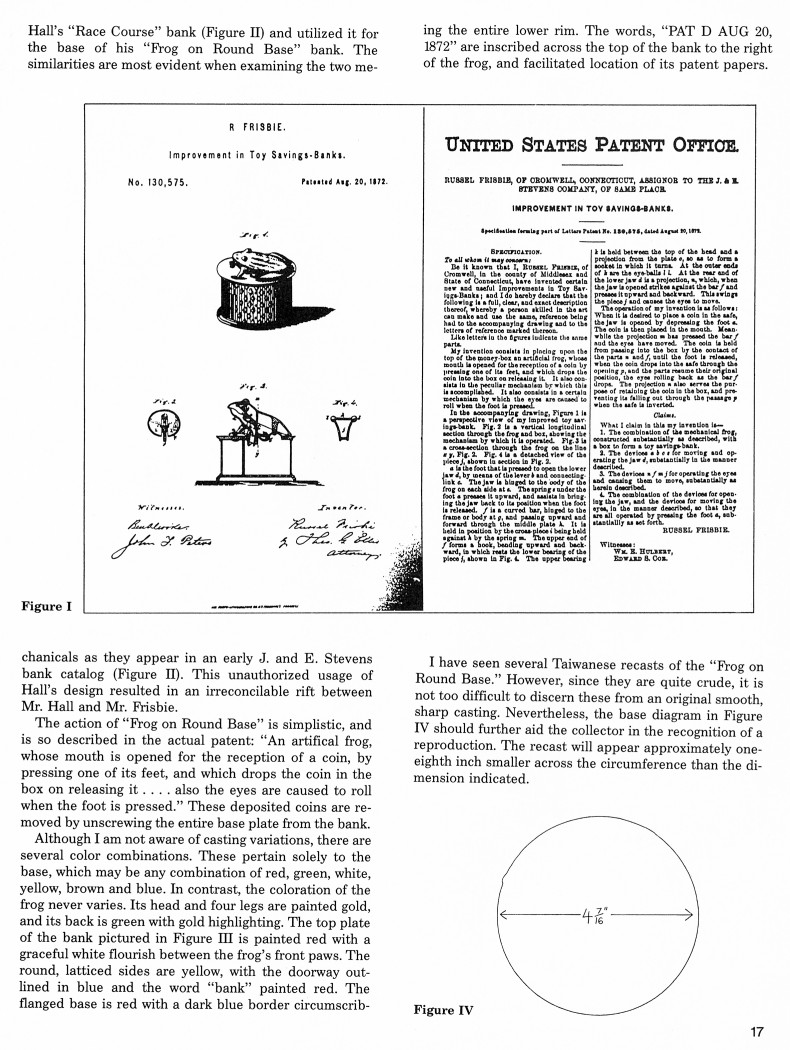|
Frog on Round Base
by Sy Schreckinger – ANTIQUE TOY WORLD Magazine – March, 1989
"Amusing" and
"innocuous" aptly describe particular members of the class of vertebrate
referred to as amphibians. Since nature has endowed them with
wide-mouthed, voracious appetites, it is not surprising that these
creatures had been regarded by mechanical bank manufacturers as worthy
subjects to enliven their penny "gobblers." Our amphibious bank friends
include: "Frog on Rock," "Toad on Stump," "Frog on Arched Track," "Toad
in Den," "Chief Big Moon," "Professor Pug Frog's Great Bicycle Feat ...
"Snake and Frog in Pond," "Goat Frog and Old Man," "Initiating Bank First
Degree," "Flip the Frog," "Two Frogs," and the subject of this article,
"Frog on round Base."
This unassuming little bank was invented by Russel A. Frisbie,
General Superintendent and partner of the J. and E. Stevens Company of
Cromwell, Connecticut. Frisbie was granted Patent number
130,575 on August
20, 1872 (Figure I). An unfortunate set of circumstances surrounds the
invention and patenting of "Frog on Round Base." During this same period
of time, the J. and E. Stevens Company was producing banks designed by Mr.
John Hall. These included such classics as "Tammany," "Liliput," "Race
Course," and the first patented cast-iron mechanical bank ever
manufactured, the "Hall's Excelsior." Then, for no apparent reason, Mr.
Frisbie plagiarized the design from the base section of John Hall's "Race
Course" bank (Figure II) and utilized it for the base of his "Frog on
Round Base" bank. The similarities are most evident when examining the two
mechanicals as they appear in an early J. and E. Stevens bank catalog
(Figure II). This unauthorized usage of Hall's design resulted in an
irreconcilable rift between Mr. Hall and Mr. Frisbie.
The action of "Frog on Round Base" is simplistic, and is so described
in the actual patent: "An artificial frog, whose mouth is opened for the
reception of a coin, by pressing one of its feet, and which drops the coin
in the box on releasing it .... also the eyes are caused to roll when the
foot is pressed." These deposited coins are removed by unscrewing the
entire base plate from the bank.
Although I am not aware of casting variations, there are several
color combinations. These pertain solely to the base, which may be any
combination of red, green, white, yellow, brown and blue. In contrast, the
coloration of the frog never varies. Its head and four legs are painted
gold, and its back is green with gold highlighting. The top plate of the
bank pictured in Figure III is painted red with a graceful white flourish
between the frog's front paws. The round, latticed sides are yellow, with
the doorway outlined in blue and the word "bank" painted red. The flanged
base is red with a dark blue border circumscribing the entire lower rim.
The words, "PAT D AUG 20, 1872" are inscribed across the top of the bank
to the right of the frog, and facilitated location of its patent papers.
I have seen several Taiwanese recasts of the "Frog on Round Base."
However, since they are quite crude, it is not too difficult to discern
these from an original smooth, sharp casting. Nevertheless, the base
diagram in Figure IV should further aid the collector in the recognition
of a reproduction. The recast will appear approximately one-eighth inch
smaller across the circumference than the dimension indicated.
|


